Understanding Urethane Limit Blocks: Essential Components for Precision in Machining
项目类型:
应用区域:
使用产品:
安装型号:
Urethane limit blocks are essential components in the manufacturing and machining industry, particularly in the realm of machine tools and their accessories. These blocks are primarily utilized as precision stops, ensuring that machinery operates within designated parameters to maintain accuracy and efficiency in production processes.
One of the standout features of urethane limit blocks is their durability and resilience. Made from high-quality urethane materials, these blocks can withstand significant wear and tear while offering superior cushioning properties. This makes them ideal for applications where mechanical impacts or vibrations are common. By absorbing shocks and reducing the risk of damage to both the limit block and the machinery, urethane limit blocks contribute to longer equipment life and lower maintenance costs.
In terms of functionality, urethane limit blocks serve multiple purposes. They act as physical barriers that define the maximum and minimum positions of moving parts in machinery. By doing so, they help prevent mechanical failures that could arise from overextension or misalignment. This precision is crucial in industries where accuracy is paramount, such as in the production of intricate components for aerospace, automotive, and electronics sectors.
Moreover, urethane limit blocks are highly adaptable. They can be customized to fit various machine specifications, allowing manufacturers to implement them across a wide range of applications. Whether it’s in CNC machines, lathes, or milling machines, urethane limit blocks can be tailored to meet specific operational needs, enhancing the overall productivity of the machinery involved.
In addition to their mechanical advantages, urethane limit blocks also contribute to workplace safety. By ensuring that machinery operates within safe limits, they help mitigate the risk of accidents that could arise from equipment malfunction or operator error. This safety aspect is particularly critical in high-speed manufacturing environments, where the potential for injury can be significantly elevated.
Furthermore, the use of urethane limit blocks can lead to increased efficiency in production processes. By maintaining the correct position of machine components, these limit blocks enhance the accuracy of machining operations, resulting in minimal material wastage and improved product quality. This not only bolsters a company's reputation for precision but also optimizes resource utilization, ultimately leading to greater profitability.
In conclusion, urethane limit blocks are vital components in the manufacturing and machining industry. Their ability to provide durability, adapt to various applications, enhance safety, and improve efficiency makes them indispensable in today’s high-precision environments. Understanding their role can help manufacturers make informed decisions that lead to improved operational outcomes and a competitive edge in the marketplace.
One of the standout features of urethane limit blocks is their durability and resilience. Made from high-quality urethane materials, these blocks can withstand significant wear and tear while offering superior cushioning properties. This makes them ideal for applications where mechanical impacts or vibrations are common. By absorbing shocks and reducing the risk of damage to both the limit block and the machinery, urethane limit blocks contribute to longer equipment life and lower maintenance costs.
In terms of functionality, urethane limit blocks serve multiple purposes. They act as physical barriers that define the maximum and minimum positions of moving parts in machinery. By doing so, they help prevent mechanical failures that could arise from overextension or misalignment. This precision is crucial in industries where accuracy is paramount, such as in the production of intricate components for aerospace, automotive, and electronics sectors.
Moreover, urethane limit blocks are highly adaptable. They can be customized to fit various machine specifications, allowing manufacturers to implement them across a wide range of applications. Whether it’s in CNC machines, lathes, or milling machines, urethane limit blocks can be tailored to meet specific operational needs, enhancing the overall productivity of the machinery involved.
In addition to their mechanical advantages, urethane limit blocks also contribute to workplace safety. By ensuring that machinery operates within safe limits, they help mitigate the risk of accidents that could arise from equipment malfunction or operator error. This safety aspect is particularly critical in high-speed manufacturing environments, where the potential for injury can be significantly elevated.
Furthermore, the use of urethane limit blocks can lead to increased efficiency in production processes. By maintaining the correct position of machine components, these limit blocks enhance the accuracy of machining operations, resulting in minimal material wastage and improved product quality. This not only bolsters a company's reputation for precision but also optimizes resource utilization, ultimately leading to greater profitability.
In conclusion, urethane limit blocks are vital components in the manufacturing and machining industry. Their ability to provide durability, adapt to various applications, enhance safety, and improve efficiency makes them indispensable in today’s high-precision environments. Understanding their role can help manufacturers make informed decisions that lead to improved operational outcomes and a competitive edge in the marketplace.
Summary:
Urethane limit blocks are essential components in the manufacturing and machining industry, particularly in the realm of machine tools and their accessories. These blocks are primarily utilized as precision stops, ensuring that machinery operates within designated parameters to maintain accuracy and efficiency in production processes. One of the standout features of urethane limit blocks is their
Author:
Source:
Date:
2025-10-31
Other information





